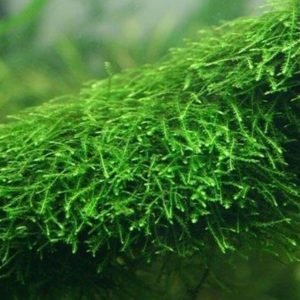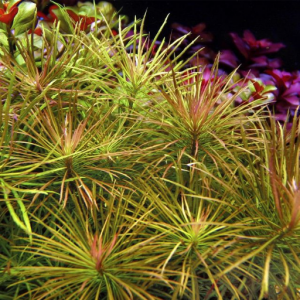Live Plants & Neutrients
Showing 241–254 of 254 results
-
Indoor Plants, Live Plants & Neutrients, Plants for terrarium
Spathiphyllum Peace Lily
Spathiphyllum, commonly known as Peace Lily, is a popular and elegant houseplant. Here’s a detailed description:
Appearance
- Foliage: The leaves of the Peace Lily are dark green, glossy, and lance-shaped with prominent veins. The leaves can grow up to 20 inches (50 cm) long, creating a lush, tropical look.
- Flowers: The plant produces beautiful, white, hood-like flowers called spathes. Each spathe surrounds a yellow or white spadix (a spike of tiny flowers). The spathes can last for several weeks and often bloom in cycles throughout the year.
- Height: Peace Lilies can range in height from about 1 to 4 feet (30-120 cm) depending on the variety and growing conditions.
Growth Habit
- Clump-Forming: This plant has a clump-forming growth habit, with new leaves emerging from the base. It creates a dense, bushy appearance.
General Characteristics
- Air Purifier: Peace Lilies are known for their air-purifying qualities, helping to remove toxins such as formaldehyde, benzene, and ammonia from the air.
- Adaptability: They thrive in a variety of indoor conditions, making them an excellent choice for both beginners and experienced plant enthusiasts.
Spathiphyllum is a beautiful and low-maintenance plant that adds elegance and a touch of greenery to any indoor space.
SKU: n/a -
Sold out!Indoor Plants, Live Plants & Neutrients, Plants for terrarium, Potted
Spathiphyllum Wallisii for terrarium/ aquarium surface
-15% Indoor Plants, Live Plants & Neutrients, Plants for terrarium, Potted
Indoor Plants, Live Plants & Neutrients, Plants for terrarium, PottedSpathiphyllum Wallisii for terrarium/ aquarium surface
Our Spathiphyllum Wallisii plant is not regular house plant. The plant is adopted to grow its roots in water without any soil. The plant can be best used to the surface of the aquarium so it can draw nutrients form water. The plant can also be used in terrariums.
SKU: n/a -
Sold out!Plants, Potted
Staurogyne repens
Staurogyne repens
- Can be used as bush or compact carpet
- Slow grower
- Ideal to be placed between rocks
- Most popular aquascaping plants
Synonyms Ebermaiera repens Nees Complete botanical name Staurogyne répens (Nees) Kuntze Family Acanthaceae Genus Staurogyne Difficulty medium Usage Midground, Nano tanks, Foreground, group, Foreground, ground cover Aquascaping well-branched, bushy Growth medium pH value 5 – 7 SKU: n/a -
Live Plants & Neutrients, Plants, Potted
Vallisneria americana Aquatic Plant
Vallisneria americana
- Also known as Vallisneria gigantea and V. americana “Gigantea”
- Very long, broad, ribbon-shaped leaves
- Green to reddish coloration
- Undemanding plant for large tanks
- Useful to create a jungle-like atmosphere
Genus Vallisneria Difficulty easy Growth fast pH value 6 – 8 Temperature tolerance 4 – 32°C Carbonate hardness 2 – 21°dKH Propagation Runners Can grow emersed? no We make sure all our live stock are kept with highest living standards with proper aquarium water care. Our fishes are quarantined before they are introduced to the store display aquariums. We make sure we sell healthy live fish and not parasites.
NOTE: OUR LIVE FISHES ARE ONLY DELIVERED TO DUBAI AND SHARJAH.
CUSTOMERS FROM ABUDHABI AND OTHER EMIRATE MAY CONTACT US TO INQUIRE ABOUT THE DELIVERY.
BUY MORE SAVE MORE!
Buy 6 or more for additional discount!
Buy 12 or more to get super discount!
SKU: n/a -
Plants, Potted
Vallisneria spiralis ‘Red’
Vallisneria spiralis “Red” is a hardy plant suitable for the beginner hobbyist. It makes little demands in the aquarium and can grow fast when conditions are optimal. It also looks the best and adapts the most out of all other Vallis
Family Hydrocharitaceae Genus Vallisneria Type Stolon Origins Can be found in tropical and sub-tropical regions worldwide. Color Green Placement Background Dificulty Easy Growth Rate Fast Lighting Low Size 30 – 50 cm CO2 Low SKU: n/a -
Sold out!
-
Floaters, Potted, Soil & Substrates, Terrarium Products, Terrariums, Tissue Culture Cup
WabiKusa Ball
 Floaters, Potted, Soil & Substrates, Terrarium Products, Terrariums, Tissue Culture Cup
Floaters, Potted, Soil & Substrates, Terrarium Products, Terrariums, Tissue Culture CupWabiKusa Ball
Size: 7-8cm
Aquascape WabiKusa Balls are the perfect start for the Japanese plant art of wabikusa. Our specialized wabikusa ball is ready to plant and has ideal mix of nutrients to ensure long-term growth of your aquatic and terrarium plants. The Aquascape Wabi Kusa Ball has a special layer that hold and retains water and moister that is needed for aquatic plants to thrive and grow.
WabiKusa is the art of arranging different aquatic plants growing on a substrate medium in the shape of a ball. The term “wabi-sabi” in Japanese, means something that is natural yet imperfect in which one can find beauty. The simple elegance of nature and it’s a tendency to stray from symmetry is the key to a beautiful wabi-kusa setup.SKU: n/a -
Sold out!Plants, Potted
Water Star Pogostemon stellatus
Water Star Pogostemon stellatus
- Fine-leaved large stem plant
- Reddish-purple to orange colours
- Eyecatcher for plant
Family Lamiaceae Genus Pogostemon Difficulty difficult Usage Background, Midground Growth fast pH value 5 – 7 Temperature tolerance 15 – 32°C Carbonate hardness 1 – 18°dKH General hardness 0 – 30°dGH Propagation Cuttings Can grow emersed? yes SKU: n/a -
Sold out!Live Plants & Neutrients, Plants, Potted, Uncategorized
Weeping moss in a bag
Weeping moss (Vesicularia ferriei) is an aquatic plant commonly found in aquariums1. It is known for its distinctive downward-sloping growth pattern, which gives it a weeping or cascading appearance123. This plant has become popular in aquascaping due to its attractive deep green color and fine texture1. Weeping moss typically grows to a height of approximately one inch.
Weeping moss belongs to the family Hypnaceae and is a pleurocarpous plant3. It does not have true roots but rather uses rhizoids to attach itself to surfaces like driftwood or rocks3. It can thrive in a range of lighting conditions, from low to bright light levels, although it will grow faster with moderate light levels1. This moss can also benefit from added fertilizers and CO2 supplements to promote healthy growth.
Overall, weeping moss is a hardy aquatic plant that can add visual interest to aquariums and aquatic setups
To care for weeping moss, you need to consider the following requirements:
- Lighting: Weeping moss can survive in low to bright light environments but will grow faster with moderate light levels.
- Water quality: It thrives in temperatures ranging from 60 to 85 degrees Fahrenheit and a pH of 5.0 to 6.0. A frequent water flow around the aquarium is necessary to sustain proper growth by continuous circulation of nutrients to all parts of the aquarium.
- Aquarium setup: Weeping moss doesn’t require specialty aquarium lights but needs to be attached to driftwood or rock for proper growth. It doesn’t have true roots but anchors itself with rhizoids.
- Nutrient supply: Weeping moss can survive without supplements and fertilizers, but it’s beneficial to add fertilizers and CO2 supplements to promote healthy growth.
Weeping moss is a hardy plant that’s relatively easy to maintain but requires a keen eye for proper care.
SKU: n/a -
Indoor Plants, Live Plants & Neutrients, Uncategorized
Zamioculcas Zamiifolia Air purifier plant
-17% Indoor Plants, Live Plants & Neutrients, Uncategorized
Indoor Plants, Live Plants & Neutrients, UncategorizedZamioculcas Zamiifolia Air purifier plant
The Zamioculcas Zamiifolia, or ZZ plant, offers several benefits beyond its attractive appearance and easy care:
Air Purification:
* ZZ plants can help improve indoor air quality by removing certain toxins. Studies have shown they can absorb volatile organic compounds (VOCs) such as formaldehyde, benzene, xylene, and toluene from the air. These are common pollutants found in many indoor environments due to synthetic materials, paints, and cleaning products.
* By filtering these toxins, ZZ plants contribute to a healthier living space, potentially reducing respiratory issues and other health problems associated with poor air quality.
Low Maintenance:
* One of the most significant benefits of ZZ plants is their hardiness and low maintenance needs.
* They are drought-tolerant due to their rhizomes that store water, making them ideal for busy individuals or those who occasionally forget to water their plants.
* They can thrive in a wide range of lighting conditions, from low to bright indirect light, making them suitable for various indoor environments, including offices with artificial lighting.
* They are also relatively pest-resistant.
Aesthetic and Ornamental Value:
* ZZ plants have glossy, dark green leaves and an upright growth habit, adding a touch of elegance and a tropical vibe to any indoor space.
* Their shiny leaves reflect light, enhancing their visual appeal and brightening rooms.
Mental Health and Well-being:
* Like many indoor plants, ZZ plants can have a positive impact on mental health by reducing stress and anxiety and promoting a sense of well-being.
* The presence of plants in living and working spaces can improve mood, increase creativity, and boost cognitive function.
Feng Shui and Cultural Significance:
* In Feng Shui, the ZZ plant is often called the “fortune tree” and is associated with growth, good luck, wealth, and prosperity.
* It is believed to help deflect negative energies and attract positive vibes. Placing it in certain areas, like the southeast corner (wealth area), study room, or dining area, is thought to enhance these benefits.
* In some parts of Africa, the leaves of the ZZ plant are traditionally used for their medicinal properties, such as treating earaches.
Other Potential Benefits:
* ZZ plants absorb carbon dioxide and release oxygen, contributing to a healthier indoor environment. Some studies suggest they may even do this at night.
* They are relatively easy to propagate from stem or leaf cuttings, allowing you to expand your plant collection or share with others.
While ZZ plants offer numerous benefits, it’s important to remember that they are mildly toxic if ingested and should be kept away from curious pets and small children.
SKU: n/a -
Plants, Tissue Culture Cup
Aquascapeplants Micranthemum Montecarlo
Aquascapeplants Micranthemum ‘Monte carlo’ grows compact close to the ground, making it one of the most use carpeting plant.
Nice plant for foreground cover
Relatively less demanding
Forms compact lush growth
Can be grown overhanging
Can form a carpet layer upto 4cm

SKU: n/a












